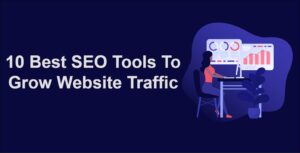Search engine optimization (SEO) remains a cornerstone for online success. While content and backlinks play crucial roles, technical SEO is the foundation that ensures your website is easily accessible and understandable by search engines.
Mastering technical SEO is essential for achieving a robust online presence and maximizing the visibility of your website in search engine results. By optimizing factors like website speed, mobile-friendliness, and indexing, you create a solid foundation for your SEO efforts.
Regular monitoring, audits, and continuous optimization ensure that your website remains in top shape and compliant with search engine guidelines.
Staying up-to-date on technical SEO trends and best practices as search engines evolve will position your website for long-term success in the digital landscape.
In this comprehensive guide to technical SEO, we will explore the complexities of this vital aspect, providing insights and strategies to optimize your website’s technical elements for better search engine visibility and user experience.
Technical SEO
What is Technical SEO
Technical SEO focuses on optimizing the technical aspects of your website to improve its search engine rankings. It involves various technical elements that impact your website’s performance, crawlability, and indexability. Let’s explore the key components of technical SEO in detail.
Is Technical SEO Important?
Technical SEO is crucial. It involves optimizing the technical aspects of your website to ensure it is search engine-friendly and provides a seamless user experience.
Proper technical SEO ensures search engines can crawl, index, and understand your content, leading to better visibility, higher rankings, and improved user engagement.
Ignoring technical SEO issues can delay your website’s performance and overall SEO efforts.
When technical SEO is addressed, issues like slow page loading, broken links, poor mobile responsiveness, and proper indexing can arise.
These issues restrict search engines from effectively crawling and indexing your content, which can result in lower search engine rankings, reduced organic traffic, and a diminished user experience.
Addressing technical SEO is essential to ensure that your website is well-structured, accessible, and optimized for search engines and users alike.
Essentials of Technical SEO
1. Website Speed and Performance
Website speed is a critical factor for both user experience and search engine rankings. Slow-loading websites frustrate users and lead to high bounce rates. Search engines like Google also consider page speed when determining rankings. To improve website speed:
Optimize Images: Compress images without sacrificing quality. Use modern image formats like WebP and implement lazy loading to only load images when they’re visible to the user.
Minimize HTTP Requests: Reduce the number of elements on your page that require separate HTTP requests. Combine CSS and JavaScript files and utilize CSS sprites for multiple images.
Enable Browser Caching: Set up caching headers to allow browsers to store static resources locally, reducing the need to re-download them on subsequent visits.
Minimize CSS and JavaScript: Minify and concatenate your CSS and JavaScript files to reduce their size. Remove any unnecessary code or plugins that can slow down your site.
Prioritize loading critical CSS first and defer non-critical styles to improve the perceived loading speed.
Use Content Delivery Networks (CDNs): CDNs store your website’s static files on servers worldwide, reducing the distance and time it takes for users to access them.
Optimize Server Performance: Choose a reliable and fast hosting provider. Consider using a dedicated server or a virtual private server (VPS) to ensure better server response times.
Minimize Redirects: Too many redirects can slow down page load times. Keep redirects to a minimum and fix any unnecessary ones.
2. Mobile-Friendly Design
With the majority of online searches now coming from mobile devices, mobile-friendliness is essential for SEO. Google has transitioned to mobile-first indexing, meaning it primarily uses the mobile version of your website’s content for indexing and ranking. To ensure a mobile-friendly design:
Implement responsive design that adapts to various screen sizes.
Use mobile-friendly fonts and buttons for easy navigation.
Avoid intrusive interstitials that disrupt the user experience on mobile devices.
3. Website Crawling and Indexing
Search engines use web crawlers to explore and index web pages. To facilitate proper crawling and indexing:
Create a sitemap.xml file and submit it to Google Search Console.
Use robots.txt to instruct search engines on which pages to crawl and which to avoid.
Fix and monitor crawl errors to ensure all pages are accessible.
4. Schema Markup
Schema markup is a form of microdata that provides context to search engines about the content on your website. It helps search engines understand the type of content and display rich snippets in search results, enhancing click-through rates.
5. SSL Encryption
Securing your website with an SSL certificate (HTTPS) is not only essential for user security but also a ranking factor. Websites with HTTPS receive a small ranking boost, and Google Chrome even displays a “Not Secure” warning for non-secure sites.
6. Canonicalization
Canonical tags help prevent duplicate content issues by specifying the preferred version of a page when multiple versions exist. This prevents search engines from indexing the same content multiple times, which can negatively impact rankings.
Technical SEO Best Practices
1. Optimize URL Structure
Ensure your URLs are clear, descriptive, and contain relevant keywords. Avoid using lengthy URLs with unnecessary parameters or symbols that can confuse both users and search engines.
2. XML Sitemaps
Create and submit an XML sitemap to search engines to help them understand the structure of your website. A well-structured sitemap makes it easier for search engines to crawl and index your content.
3. Mobile-First Indexing
Given the importance of mobile-friendliness, adopt a mobile-first mindset for your website’s design and content. Prioritize responsive design and ensure that mobile users have a seamless experience.
4. Page Speed Optimization
Page speed directly affects user experience and rankings. Optimize images, leverage browser caching, and minimize unnecessary code to improve loading times.
Technical SEO Monitoring and Optimization
1. Google Search Console
Regularly monitor your website’s performance using Google Search Console. It provides insights into indexing status, crawl errors, and search appearance data that can guide your optimization efforts.
2. Google Analytics
Track user behavior on your website using Google Analytics. Analyze metrics like bounce rates, session duration, and page views to identify areas that need improvement.
3. Technical Audits
Perform regular technical audits to identify and fix issues that might hinder your website’s performance. Use tools like Screaming Frog or SEMrush to identify broken links, duplicate content, and other technical glitches.





